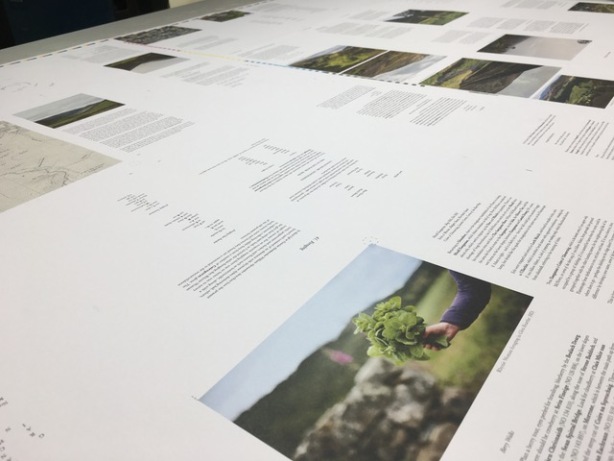NatureScot recently published a report on the relevance of Gaelic language, place names, literature and song, tradition and folklore to assessing ecosystem services. This is a very significant development in approaching ecosystem service assessment through a cultural lens, understanding that culture is not just tourism and beauty spots, but is the articulation of values, uses and meanings.
The Gaelic heritage of Scotland, despite being largely ignored by authorities and academics concerned with land and marine management, has much to offer those who seek to analyse how Scottish ecosystems might, and do, provide services to the population of the country and beyond. The Gaelic language, and its attendant culture and heritage give a unique and informative window on the landscape and natural ecosystems, and human interactions with both, in the Scottish Highlands, over a very long period, and therefore possess relevance for the Scottish people’s collective view of their land and its management, now and in the future. In this scoping report, the author explores Gaelic toponymy, literature and oral tradition, as they impinge upon Ecosystem Services, and makes twenty recommendations for future, detailed research on these issues
RESEARCH REPORT NO. 1230 ‘ECOSYSTEM SERVICES AND GAELIC: A SCOPING EXERCISE’
The next challenge is to explore how contemporary artists are involved in this. Artists across every artform as well as designers are engaged in the cultural ways of understanding ecosystems. Prof Murdo Macdonald explored Gaelic, colour and the indigenous plant life of Scotland in a paper given to the Black Wood of Rannoch Workshop, Kinloch Rannoch, 22 November 2013 organised by Collins and Goto working with Forest Research.
He concludes saying,
To use another phrase from Gregory Bateson, ‘mind and nature’, what I have argued here is that, whether one looks at the Gaelic alphabet with its botanical references, or the landscape subtlety of Gaelic colour words, the Gaelic language facilitates the understanding of ‘mind and nature’ as integral to one another.
HTTPS://MURDOMACDONALD.WORDPRESS.COM/ALPHABET-COLOUR-GAIDHEALTACHD-AN-ECOLOGY-OF-MIND/
One example is poet and visual artist Alec Finlay – his work Gathering is just one example.
Gathering is an innovative mapping of the Highland landscape in poems, essays, photographs, and maps, conceived by Scottish artist and poet Alec Finlay. The work guides the reader to modest and forgotten places in this complex region.
Finlay worked from Adam Watson’s published collection of names, one of the most signiï¬cant modern contributions to Scottish folk-culture consisting of over 7,000 local place-names, covering every ruined farm, shieling, hill, glen, spring, burn, and wood in the region. Over a period of years, Finlay expanded Watson’s catalogue into a generous ‘ecopoetic’ and ‘place-aware’ account of the Cairngorms, accompanied by photographs showing the hills in all their seasonal variety. Essays guide the reader to names that reveal the haunts of wolves and wildcats, and cast a vivid impression of the great pinewoods that once grew there, and may again.
HTTP://GATHERING-ALECFINLAY.BLOGSPOT.COM/
Another is Stephen Hurrel and Dr Ruth Brennan’s Mapping the Sea project which also focuses on place names and the seascape.
The idea of a dynamic map – to reflect intergenerational knowledge, fishermen’s ways of knowing the sea and the intangible cultural heritage* of the marine environment – had been discussed by Brennan and MacKinnon, and Hurrel proposed the idea of an interactive digital map. This was subsequently developed by Hurrel and Brennan as a way of bringing to life, and making visible, what is often invisible to most people.
HTTP://WWW.MAPPINGTHESEA.NET/BARRA/
There are many other examples of these approaches which need to inform ecosystem service assessment processes.
——
ecoartscotland is a resource focused on art and ecology for artists, curators, critics, commissioners as well as scientists and policy makers. It includes ecoartscotland papers, a mix of discussions of works by artists and critical theoretical texts, and serves as a curatorial platform.
It has been established by Chris Fremantle, producer and research associate with On The Edge Research, Gray’s School of Art, The Robert Gordon University. Fremantle is a member of a number of international networks of artists, curators and others focused on art and ecology.
Powered by WPeMatico




